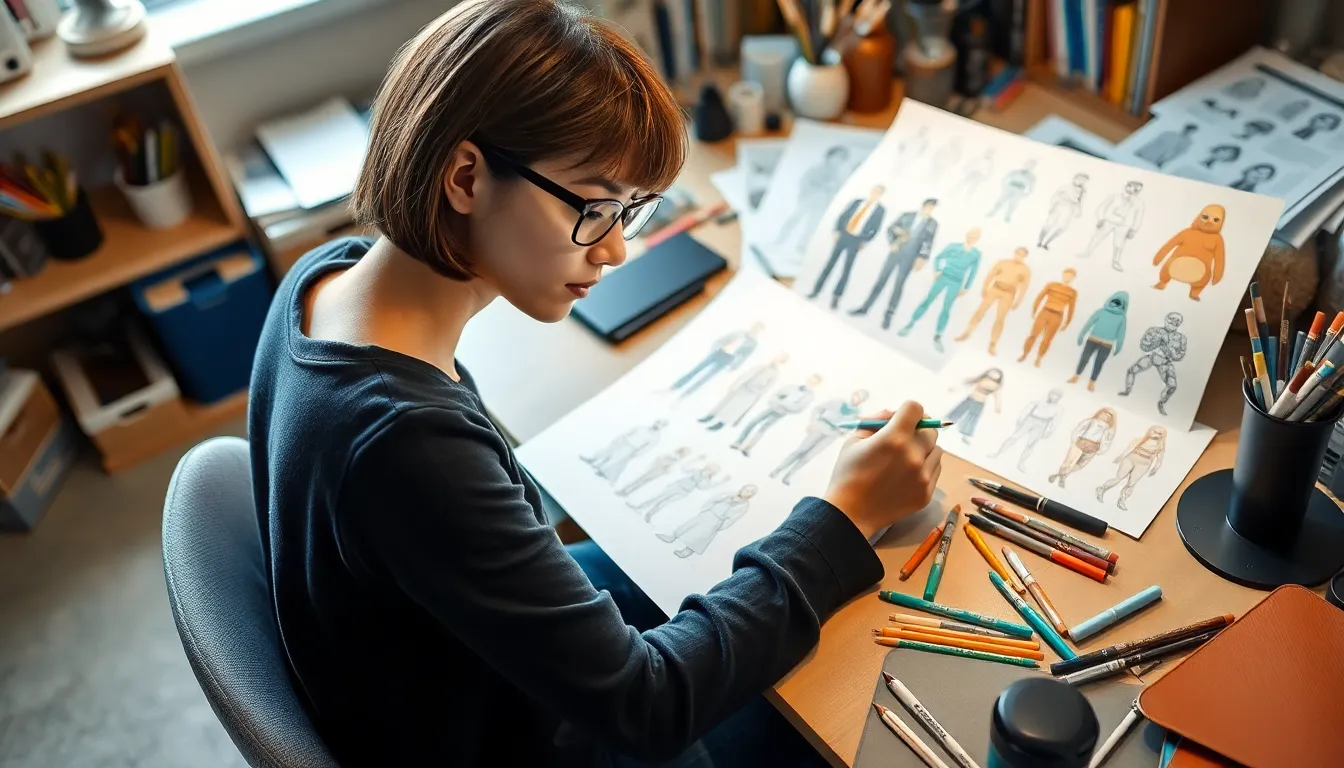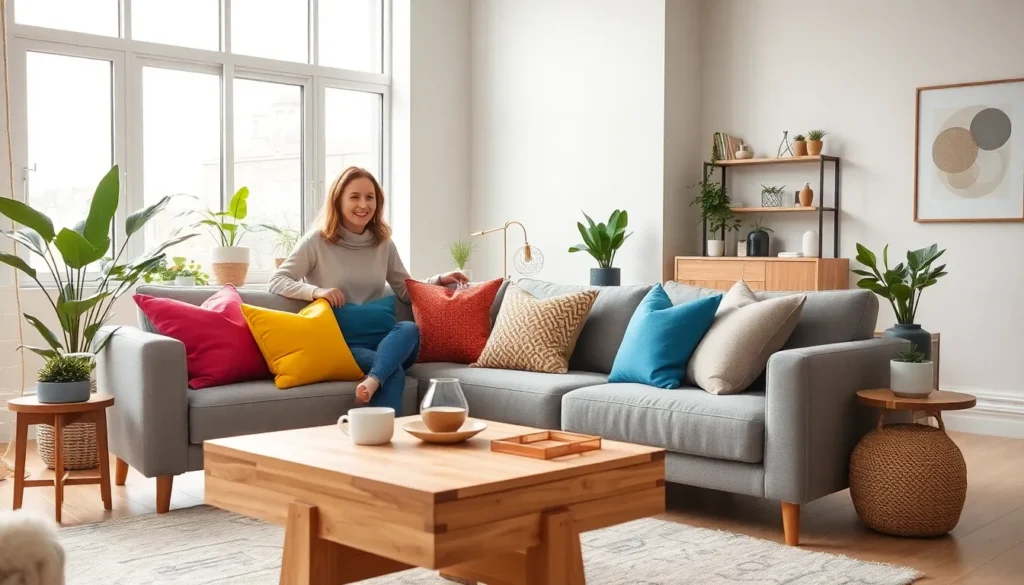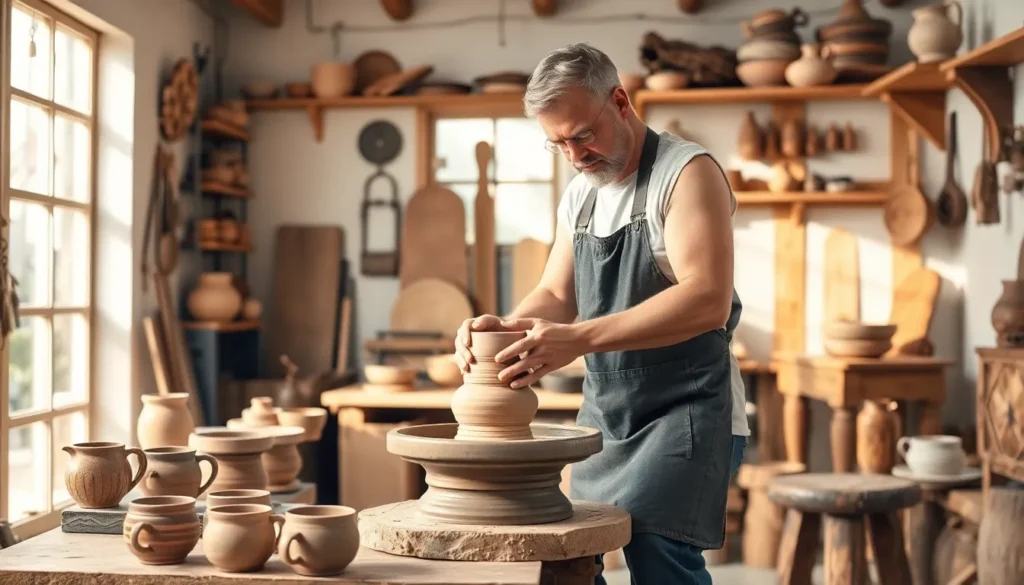In the vibrant world of storytelling, character design isn’t just an art; it’s a superpower. Think about it: a well-crafted character can evoke laughter, tears, and even the occasional existential crisis. Whether it’s the heroic knight with a penchant for bad puns or the quirky sidekick who steals the show, character design concepts breathe life into narratives and make them unforgettable.
But let’s face it—designing a character isn’t as easy as picking a name and slapping on some colors. It’s a delicate dance of personality, style, and a sprinkle of magic. From sketching out unique traits to choosing the perfect wardrobe, every detail counts. So grab your sketchpad and let’s dive into the whimsical world of character design concepts that’ll leave your audience begging for more. After all, who wouldn’t want to create the next iconic character that has everyone talking?
Table of Contents
ToggleOverview of Character Design Concepts
Character design encompasses several essential concepts that contribute to creating compelling figures in various media. Visual elements form the foundation of character design. Shape, color, and proportion play crucial roles in establishing a character’s persona.
Personality traits significantly influence character design. Designers often reflect emotions through expressions and body language. Specific details also enhance a character’s identity, such as distinctive clothing patterns, accessories, or hairstyles that set them apart.
Backstory provides depth to a character, enriching their design. Understanding a character’s history influences choices regarding their appearance and demeanor. Cultural background shapes how characters are perceived, often affecting attire, behavior, and dialogue.
Target audience impacts character design decisions. Different age groups and demographics respond to varying styles, requiring designers to cater to these preferences. Researching audience expectations helps in crafting relatable characters.
Adaptability remains crucial in character design. Characters must fit seamlessly into different contexts, whether in animations, games, or illustrations. Flexibility allows designs to evolve while maintaining core traits.
Collaboration enhances character design concepts. Input from writers, directors, and other artists fosters a deeper understanding of a character’s role within a narrative. This teamwork ensures cohesion across different creative elements.
Character design represents a blend of art and narrative. Engaging visuals combined with meaningful story elements create lasting impressions on audiences. Each aspect, from visual traits to background stories, builds a comprehensive character that audiences can connect with deeply.
Key Elements of Character Design

Character design incorporates several key elements, each contributing to a character’s distinctiveness and appeal. Understanding these aspects enhances storytelling and audience engagement.
Shape and Silhouette
Shapes and silhouettes play a crucial role in character recognition. Unique shapes set characters apart, allowing viewers to identify them at a glance. For instance, round shapes often evoke warmth and friendliness, whereas angular shapes might convey aggression or tension. Effective character designs maintain a clear silhouette, ensuring easy visibility and recognition. Combining simple shapes creates complexity, adding layers to a character’s personality without overwhelming the audience.
Color and Texture
Color choices significantly impact a character’s perception and emotional connection. Specific colors can evoke different feelings; for example, blue often represents calmness, while red can indicate passion or danger. Textures enhance visual interest, conveying a character’s lifestyle or environment. Incorporating rough textures can indicate ruggedness, while smooth finishes suggest sophistication. Utilizing color and texture effectively helps convey a character’s traits and intentions, reinforcing their identity within a narrative.
Proportions and Scale
Proportions and scale dictate a character’s physical presence and impact. Exaggerated features can create a stylized appearance, making characters more memorable. For instance, larger heads typically signify youth and innocence, while elongated limbs might suggest elegance or agility. Consistent proportions across design enhance believability, establishing a character’s relatability. Integrating appropriate scale in relation to environments or other characters helps ground a design, ensuring it fits seamlessly within its context.
Character Archetypes and Their Importance
Character archetypes serve as foundational elements in storytelling, shaping narratives and helping audiences connect with characters on a deeper level. Recognizing these archetypes enhances the design process, leading to more relatable and impactful characters.
Common Archetypes
Common archetypes include the Hero, the Mentor, the Villain, and the Innocent. Heroes typically embody bravery and resilience, driving the story forward. Mentors offer guidance and wisdom, aiding protagonists in their journeys. Villains present obstacles and conflicts, creating tension and challenges for the hero. Innocents symbolize purity and optimism, often serving as catalysts for change. These archetypes provide audiences with familiar frameworks, fostering emotional engagement and understanding.
Using Archetypes Effectively
Using archetypes effectively requires nuance and variation. Infusing unique traits into archetypal characters adds depth and originality. Combining multiple archetypes can create hybrid characters, increasing complexity and relatability. For instance, a Hero can also exhibit Villainous traits, creating moral ambiguity. Storytellers must also consider cultural contexts when applying archetypes, ensuring they resonate with diverse audiences. By reinterpreting archetypes, creators maintain fresh narratives while honoring traditional storytelling elements.
The Role of Personality in Design
Personality significantly shapes character design, enhancing depth and relatability. Designers focus on expressing traits through visual elements and behaviors.
Expression and Emotion
Character expressions mirror emotions vividly. Facial features such as eyes and mouth convey feelings like joy or sadness. Body language complements facial expressions, reinforcing the overall persona. Characters who slouch may appear defeated, whereas those with an upright posture exude confidence. Utilizing dynamic poses adds further layers, helping audiences connect emotionally. Colors also play a role, as warm tones can evoke happiness while cool tones might suggest melancholy. Designers should prioritize these details, ensuring the character’s personality resonates with viewers.
Backstory Influence on Design
Backstories inform design choices extensively. They provide context for a character’s appearance and behavior. A character raised in a harsh environment may exhibit rough clothing and guarded body language. Designers incorporate elements like scars or tattoos to indicate significant life events. Additionally, backstories shape the character’s motivations, further influencing visual traits. For example, a hero with a tragic past might have lingering sorrow reflected in their expression. Prioritizing backstory details enriches character design, enhancing audience engagement and emotional investment.
Tools and Techniques for Character Design
Character design encompasses various tools and techniques that enhance creativity and execution. Designers often choose between digital and traditional methods, each offering distinct advantages.
Digital vs. Traditional Methods
Digital methods provide speed and flexibility, making adjustments easy. Software enables the use of layers, allowing designers to experiment with colors and shapes without starting over. Traditional methods, such as pencil and paint, offer a tactile experience that many artists find satisfying. Feelings of authenticity often arise from using physical materials. The choice between digital and traditional largely depends on personal preference and project needs.
Software and Resources
Numerous software options assist in character design, including Adobe Photoshop, Illustrator, and Clip Studio Paint. Each application provides unique features suitable for different aspects of the design process. Online resources, such as tutorials and forums, enhance learning and skill development. Artists can access platforms like ArtStation and Behance for inspiration and networking opportunities. Combining software skills with resources creates a well-rounded approach to effective character design.
Character design is an intricate blend of visual artistry and narrative depth. By understanding the essential concepts discussed, designers can create memorable characters that resonate with audiences. The thoughtful integration of personality traits, visual elements, and backstory enriches the character’s identity, making them relatable and engaging.
Embracing the nuances of shape, color, and proportion allows for a distinctive presence that captures attention. Moreover, recognizing audience expectations ensures that characters connect on a deeper level. Ultimately, successful character design requires a collaborative approach, merging the talents of writers, artists, and directors to bring iconic characters to life. This art form not only enhances storytelling but also leaves a lasting impression on viewers.









